This story is part of Next Generation, a series in which we give young makers a platform to showcase their work. Your work here? Get in touch and plot your coordinates as we navigate our future together.
Redesigning day to day products and their production to something more sustainable is necessary to enable us to continue living on a healthy planet. Glass is usually seen as something sustainable because it is recycled endlessly worldwide. However, energy consumption is completely overlooked in the case of glass. Founder of Studio Peipei, Benedikt Peirotén has started a project called ‘From the Ashes’ proposing using waste streams to replace the energy-intensive ingredients in glass. By redesigning the production of glass, Benedikt explores the potential of renewable raw materials as an alternative. This glass is a first step towards improvement towards sustainable glass making.
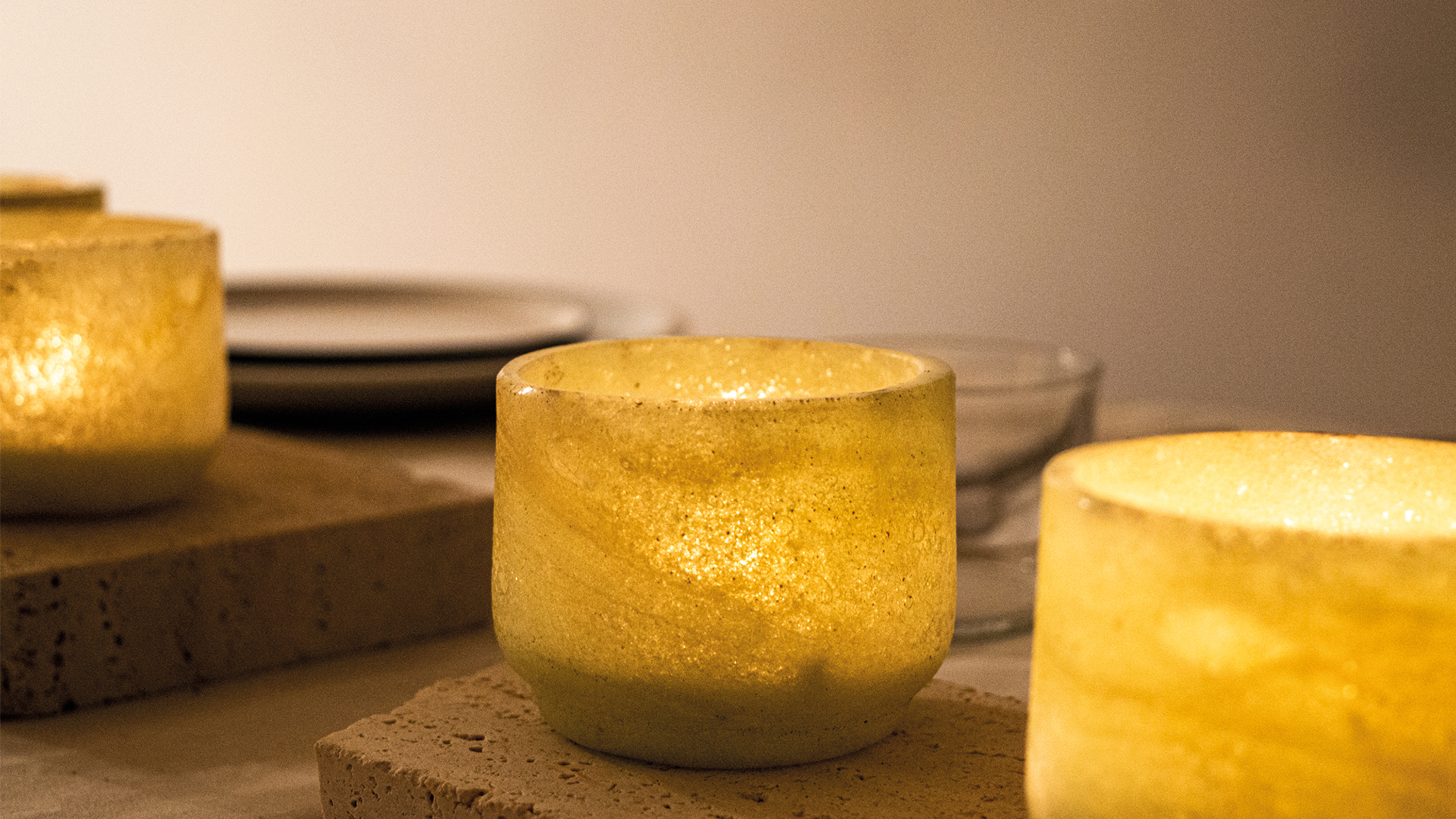
Tell us about your project From the Ashes.
From the Ashes is an energy-saving and waste-based glass made with ashes from wood-fired pizzerias, sea shells from seafood restaurants and german high quality quartz sand. In addition to sand, glass usually requires two other main components: Sodium and Limestone. As with most industrial processes, the availability of these ingredients is changing dramatically due to climate change and human production methods.
This new glass explores infinite supply chains by using waste from renewable resources that previously had no value.
Furthermore, the raw materials usually come from different continents, are produced in completely different parts of the world and are then distributed to global consumers. This new glass explores infinite supply chains by using waste from renewable resources that previously had no value. The recycled materials are processed by a self-developed system in the studio, to then be melted down and processed with the glassblower "theglassapprentice". It can then be endlessly recycled as glass or even ground back into sand and given back to nature as no questionable additives are used. This creates a holistic material cycle. But the whole story is much more complex, more details are explained on my page.
What inspired you to make glass-making more sustainable?
At the beginning of my research, I realized that established materials are rarely questioned. We tend to focus more on visible problems like plastic waste, and of course that's a good thing. But many other materials also need to be considered. And not just when it's almost too late.
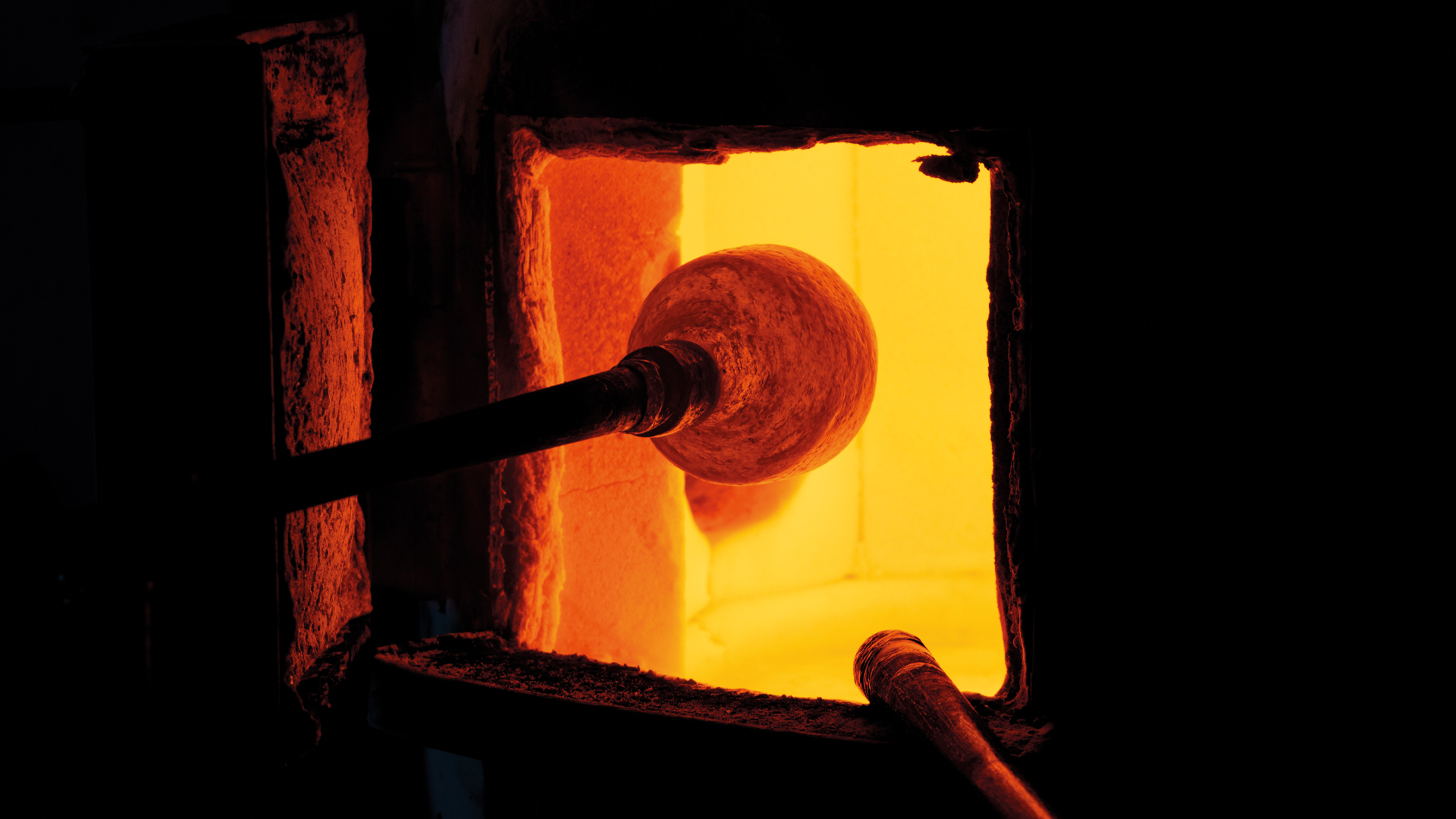
Can you give us insight into your creative process?
A material design process is initially less exciting than one might think. For months I researched in specialist books and had many conversations with scientists from the industry, historians and glassblowers. And then it was not easy to find someone who is open to experiments and has the necessary equipment. But the process is now well established. Twice a week I collect the ashes from eight pizzerias and prepare them in my studio. This is done using self-made machines, for example a modified bass drum and an old spin dryer to sift and filter the ashes. With a new material, the production must also be rethought. And then every few months the mixture is melted down and processed.
It reflects an emerging desire for objects with narratives.
What goal is behind the design of the glass products?
The irregularities in the glass create a unique play of light, which is why the glass is ideal for lamps and in combination with candles. But my first goal was drinking glasses. Because something that we bring to our mouths to drink from has to be perfect. I want to show that my glass is applicable.
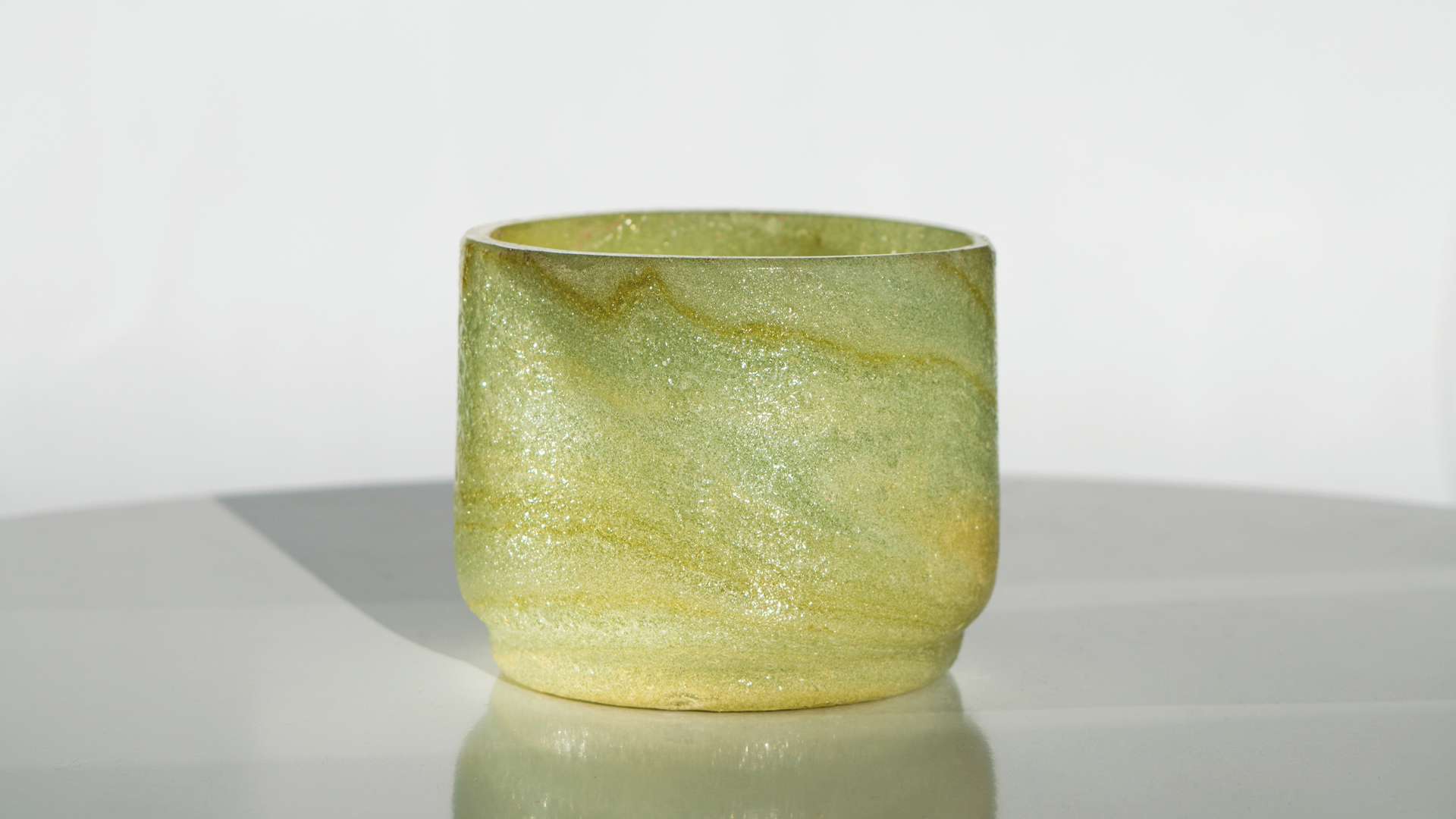
How does From the Ashes reflect on our relationship with the materials we use?
It reflects an emerging desire for objects with narratives. In a world of over-consumption and flawless products, these too become interchangeable and worthless. But I think people want to build relationships with their objects. They want to know the background of the production and want an honest and transparent improvement. One way is to involve people. And isn't it also a bit magical if every pizza contributes to the production of glass?
What other sustainable sources could be used for the sustainable production of glass?
I've experimented with many other ingredients: BBQ ash, seaweed, bird droppings, fruit peels, rust, marble dust, snail shells and more. Some of them would work, but the processing is no longer sustainable in my opinion. Much of it would have to be burned first. Nevertheless, I will continue to research it. And I'm also working on an alternative manufacturing technique, but it's not finalized yet.
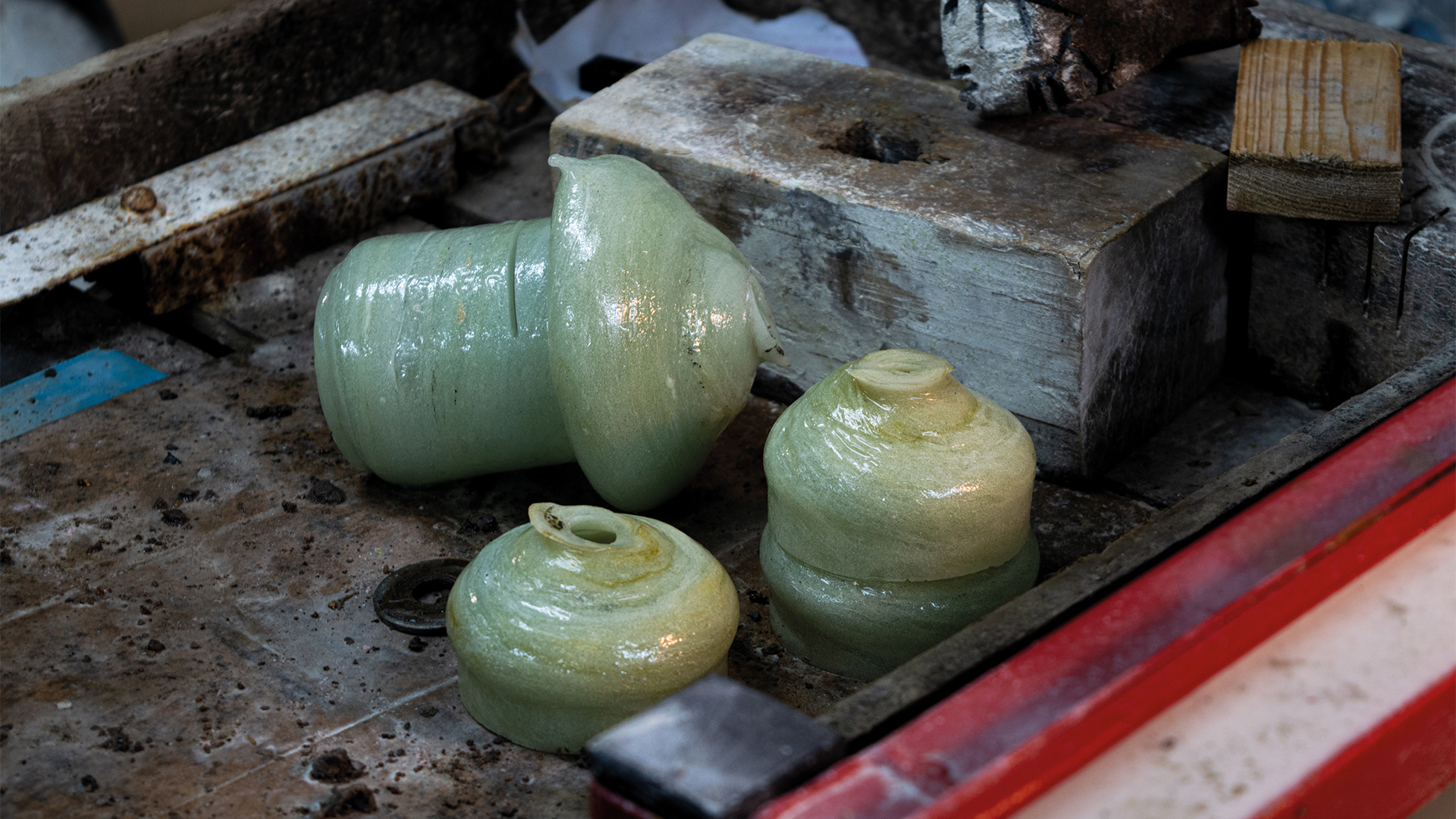
Can you tell us a bit about you, as the artist behind the glass?
I left home when I was 17 and, in addition to my apprenticeship as a precision mechanic, I kept my head above water as a caretaker at a public swimming pool. My long training path is characterized by detours and a wild mix of part-time jobs. As an industrial designer, I wanted to make the world a better place, but in many areas products that have hardly changed are just put in new covers. That's why I decided to develop new and meaningful materials in my own studio. Nevertheless, I’m still interested in immersing myself in other professions on the side. I think designers should be as versatile as possible.
In addition to a sustainable material, I am also concerned with preserving the glassblowing craft.
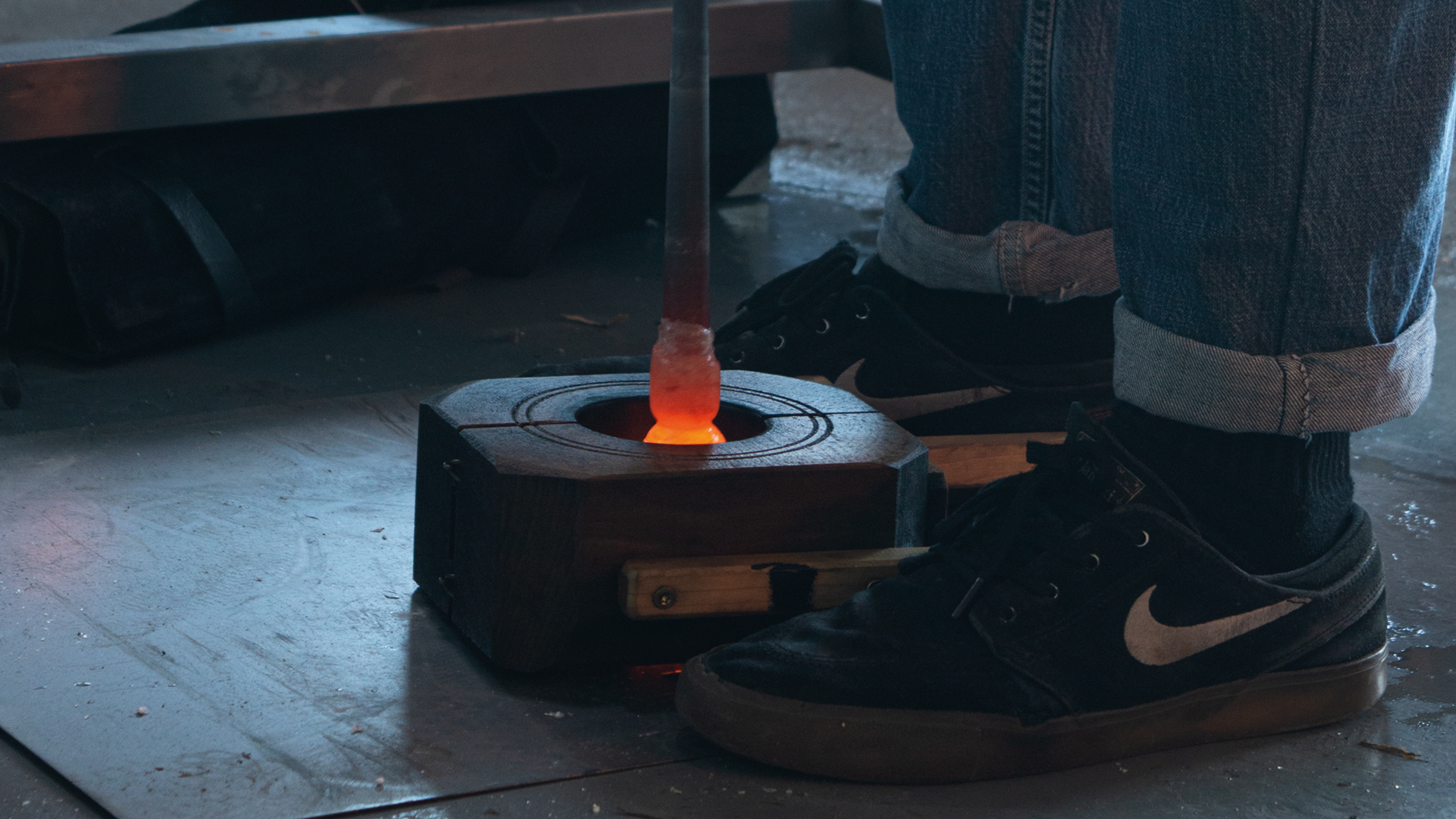
What contributions do you hope your project will have for the future of glass making?
In addition to a sustainable material, I am also concerned with preserving the glassblowing craft. I've contacted a lot of glassblowers all over Europe and almost everyone says the same thing: It's no longer worth it. With their extinction, much knowledge would also be lost.
Any upcoming projects you would like to share?
I can't share any details yet, but three different waste-based ceramics and a cement will be coming out soon. I'm currently experimenting with leftover food and rubble. But I am completely open to inquiries and like to delve into completely new topics.
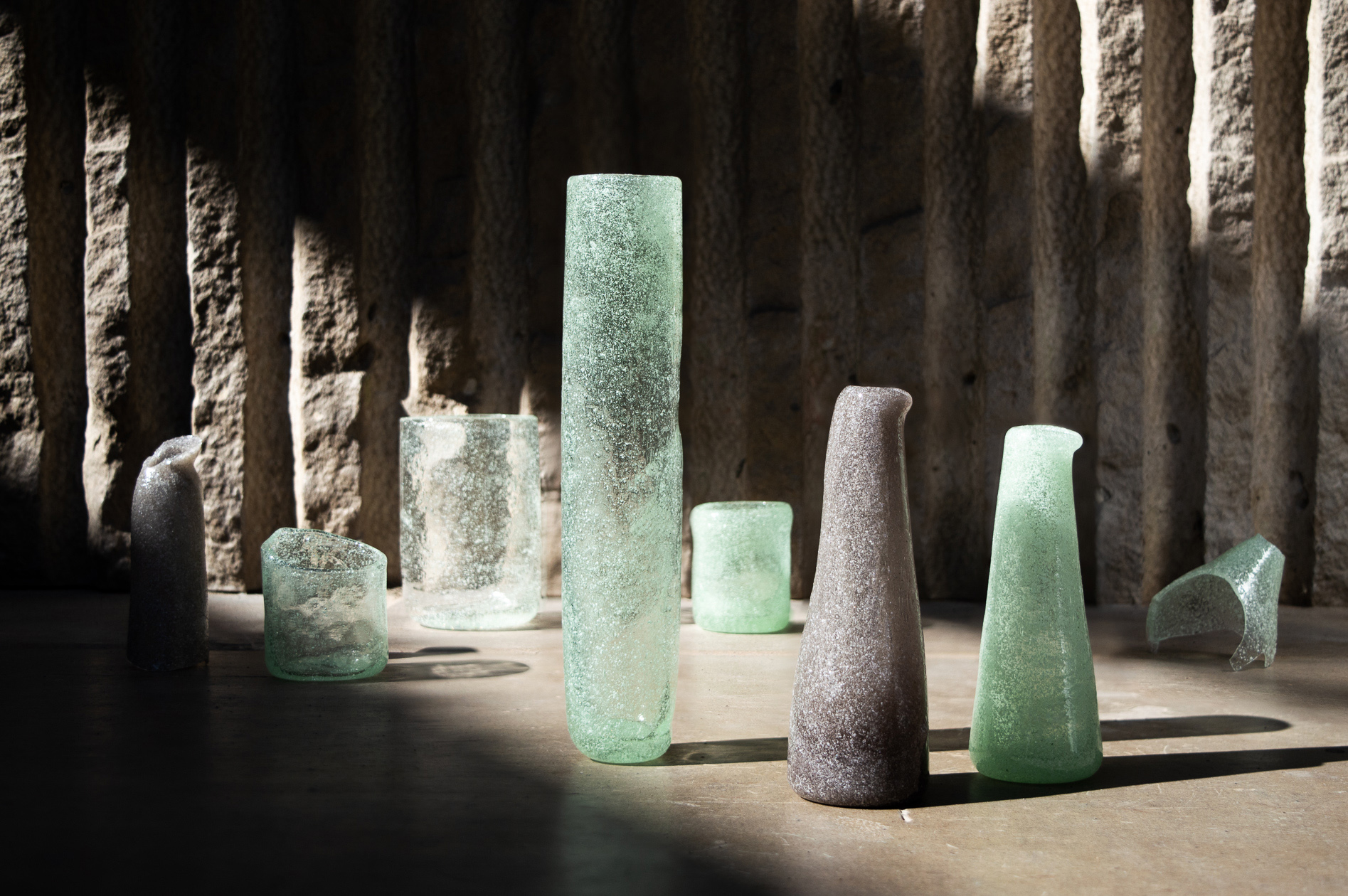
Share your thoughts and join the technology debate!
Be the first to comment